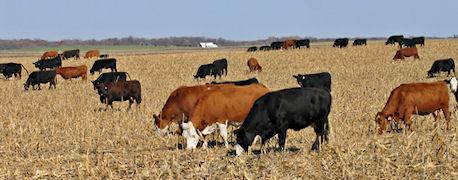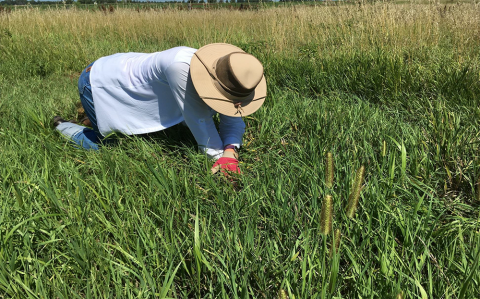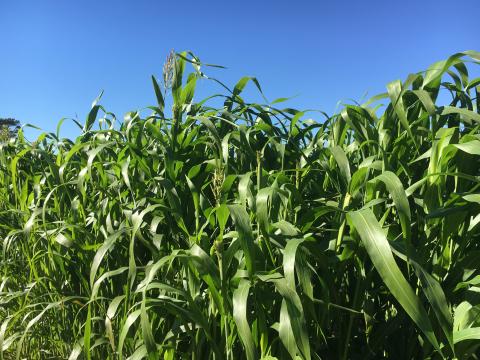Forage, Feed, and Grazing Restrictions for Row Crop Herbicides
As the end of corn harvest nears, some producers will soon be turning their cattle into corn stalks or cover crops to graze. Before taking this step, take time to review the labels from in-season and fall-applied herbicides for any grazing restrictions.
Student Research: Do Winter Annual Small Grains Reduce Perennial Grass Establishment?
Nitrate Nitrogen or Nitrate — What's the Difference?
I just got the nitrate test results back from the lab and the level was 3,000. Am I in trouble?
Student Research: Potential Benefits of Sorghum-Sudangrass as a Companion Crop to Establish Forage and Native Legume Species
Which Winter Forage is Best Suited to Your Operation
Trying to decide between planting wheat, rye, or triticale for early spring forage? Consider the characteristics of each when selecting the right one for your operation and management.
Nebraska Hay & Forage Hotline
Harvesting Summer Annual Grasses for Hay
It is difficult to put up good quality hay – hay that is dry and will not heat or mold – from summer annual grasses like sorghum-sudan hybrids, pearl millet, and forage sorghums. Obviously, this type of hay, which is also called cane hay, is challenging to bale or stack for most growers, mostly due to its stems.
Growers Report Oats Not Performing As Expected
For the past couple of weeks, I’ve been bombarded with questions about why oats are short and heading out early. I’m still looking for the answer.
Oats are becoming more and more popular as an inexpensive, reliable forage. The crop tends to thrive during cool, wet springs, such as we had this year from mid-April through May, which further begs the question as to why they’re so short.


